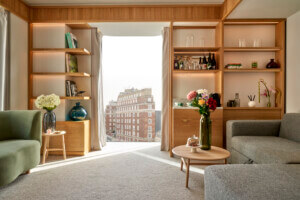The 22nd Serpentine Pavilion, designed by Lina Ghotmeh, will open to the public on June 10. The annual pavilion commission put on by the Serpentine Gallery in London’s Kensington Gardens, has hosted international projects since 2000. This year’s pavilion, which will be open through October 29, was again supported by Goldman Sachs with AECOM providing technical advisory services, and David Adjaye returning as an advisor.
Titled À table, the wooden structure was designed in line with its natural surroundings and is encircled by a series of wooden stools and tables. Ghotmeh’s design was inspired by the architect’s experience growing up in Beirut and living and working in Paris, alongside her long-spanning focus on sustainable materials through her firm Lina Ghotmeh — Architecture. Her past projects include the Estonian National Museum, Stone Garden in Beirut, Lebanon, and Ateliers Hermès in Normandy, France.
A series of 25 tables snake around the perimeter of the circular pavilion, complete with 57 backless stools, designed by Ghotmeh in collaboration with The Conran Shop. Ghotmeh hopes that this setting will encourage people to gather, serving as a place to “eat, work, play, meet, talk, rethink and decide.”
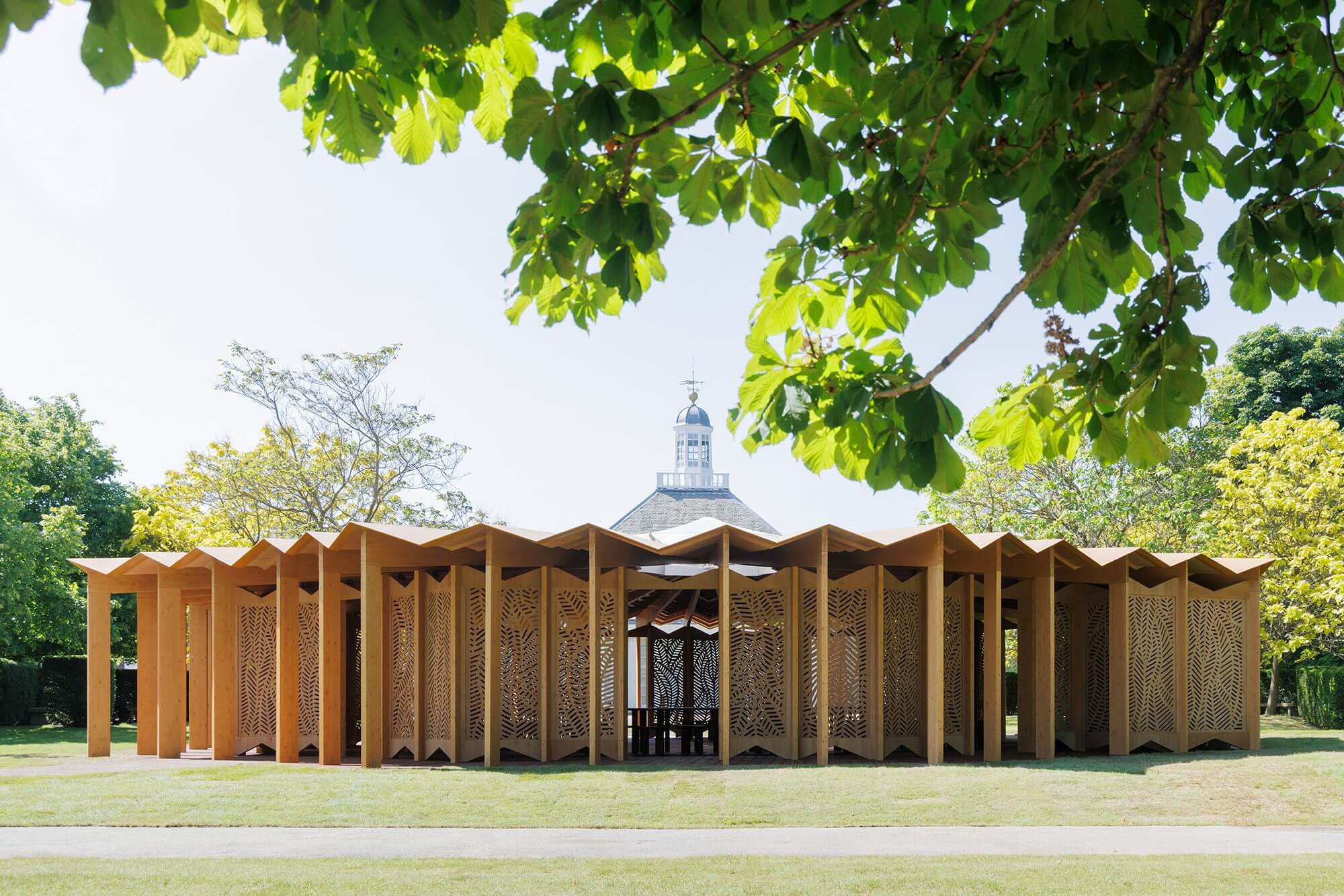
The 300-square-foot pavilion rises 14.4 feet at its peak (4.4 meters) and was constructed with glulam timber columns and rafters. A central steel ring supports the structure, and the rooftop deck was installed with plywood and an applied membrane for waterproofing. The facade was built with plywood panels placed between the columns, which were stained and treated for fire resistance. Foundations were poured with precast concrete designed to be “removable and reusable.”
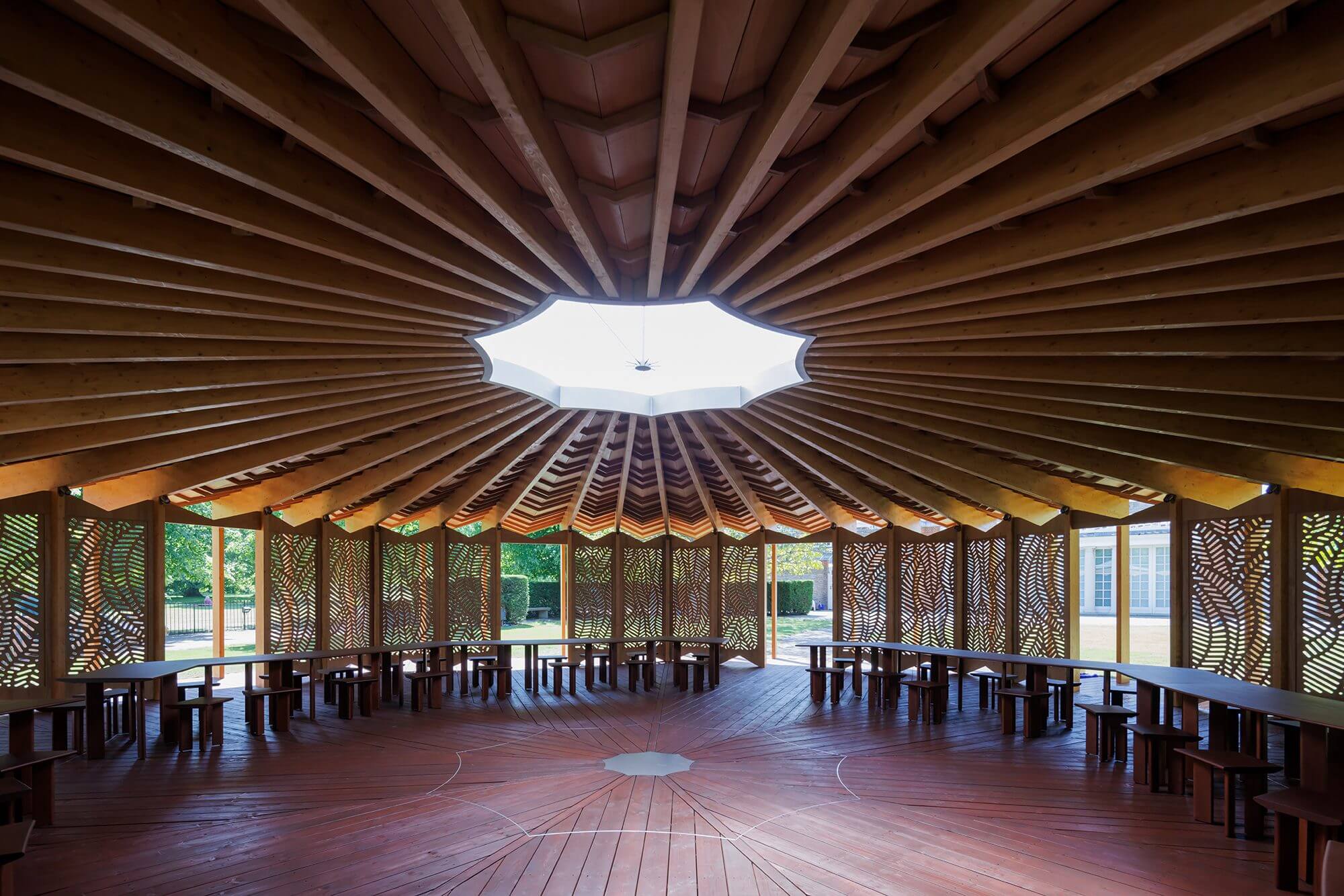
Ghotmeh likened the resulting form of the pavilion as akin to Toguna huts built by Dogon communities in Western Mali and the canopy-esque roof to “echoing the structures of tree leaves,” emphasizing the use of low-carbon materials and formal moves that resonate with the site’s surrounding park. Ghotmeh summarized the approach: “While rooted in its place and welcoming the space of the park with its open gallery-like envelope, the Pavilion invites us into its intimate interior where light shimmers through the fretted panels enveloping its heart. Growing as an adaptable system, À table is a lightweight structure that can easily be disassembled and reassembled. It will live beyond its Serpentine site all while holding the memory of its original ground.”
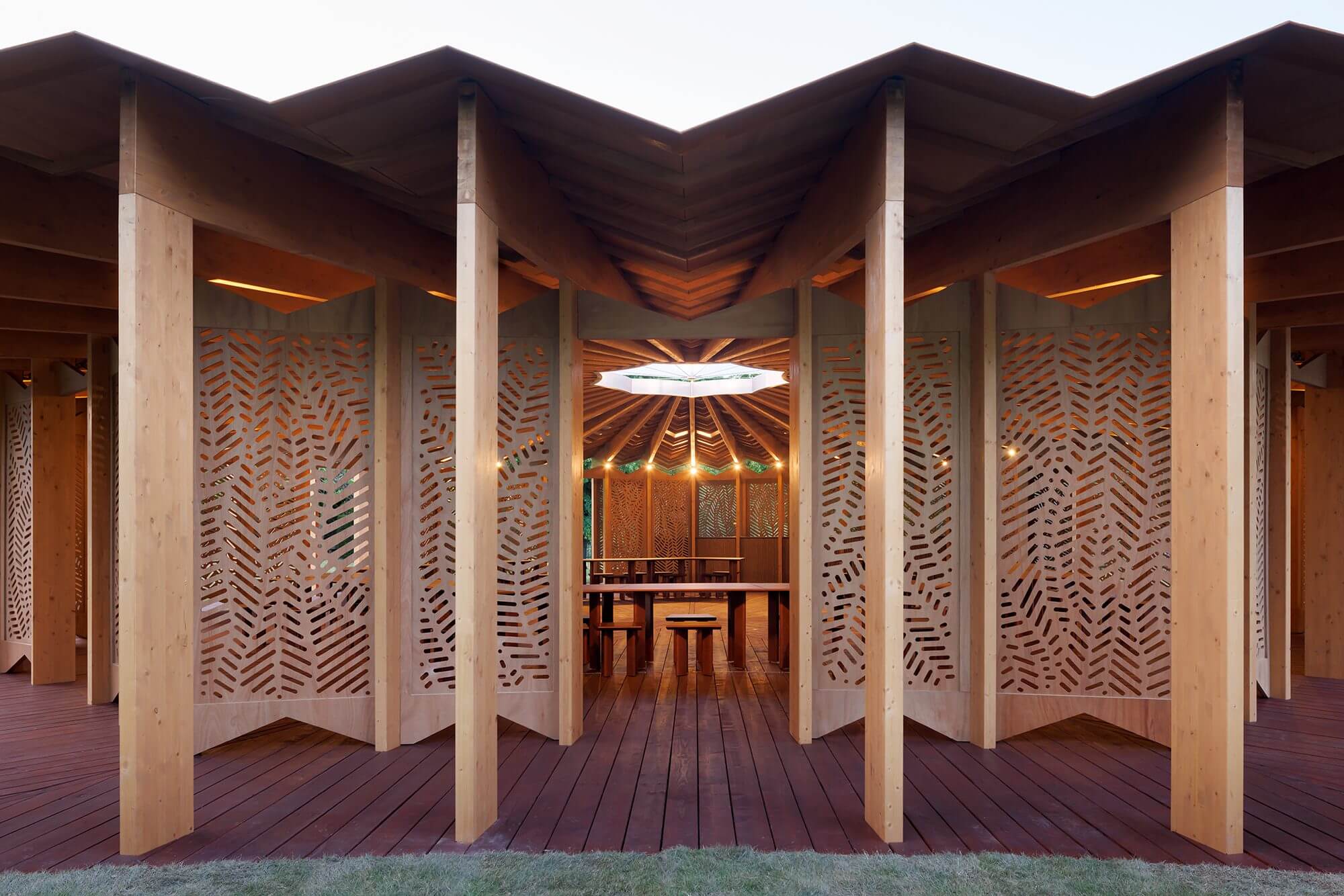
The modular system was prefabricated by Stage One Creative Services in York, United Kingdom, with residual waste timber chipped for use in the manufacturer’s biomass energy facility. AECOM said that the larger design team also performed an audit to ensure that the timber was sustainably sourced, and that all products in the building’s construction were sourced from sustainable supply chains. The straightforward bolt-and-screw assemblies will allow for the structure to be easily dismantled and reused.
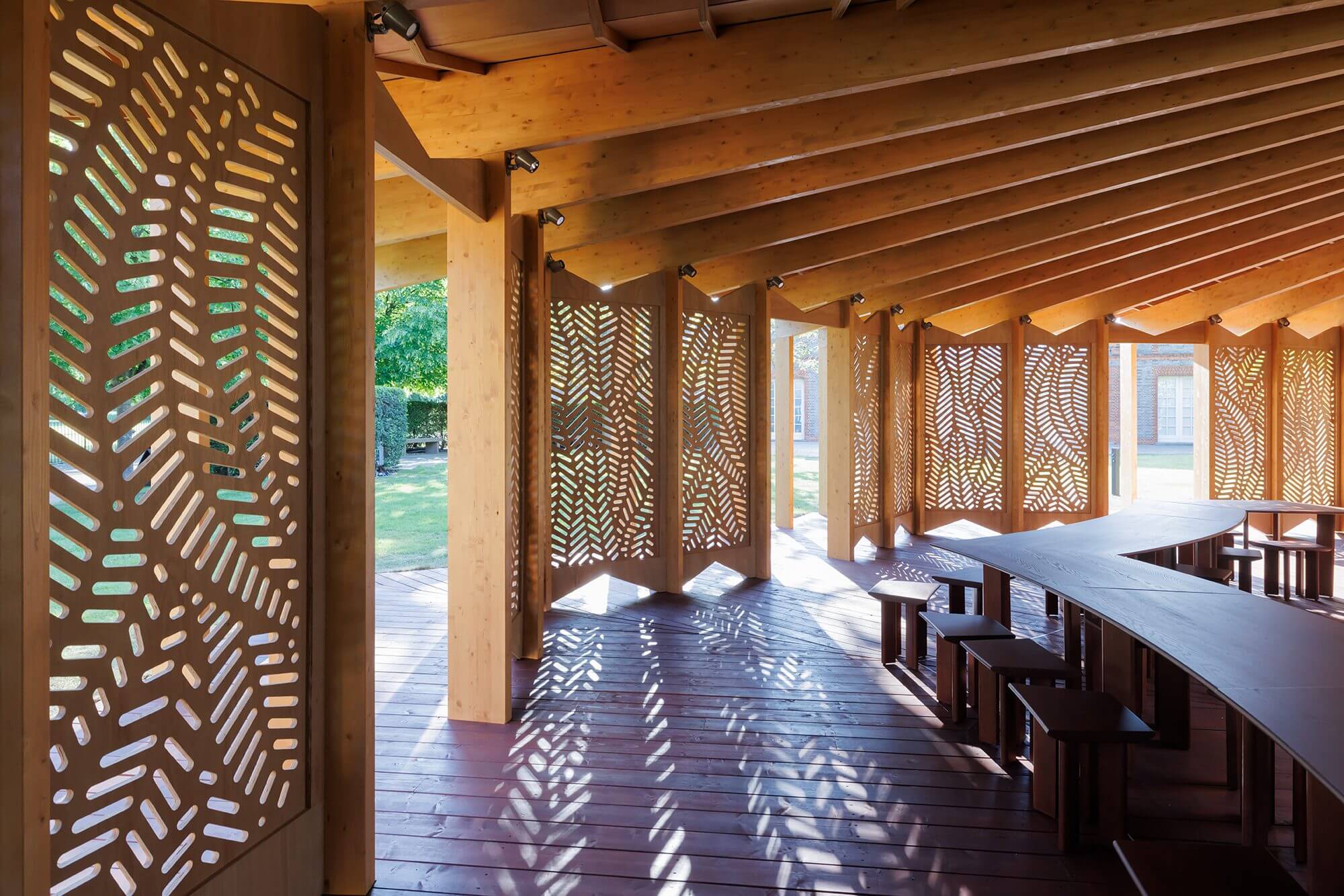
Bettina Korek, chief executive of Serpentine Galleries, and Hans Ulrich Obrist, artistic director of Serpentine Galleries, said: “We are honored to unveil Lina Ghotmeh’s first structure in the UK. À table continues Serpentine’s mission of building new connections between artists, architects, and society. Drawing on natural elements that reflect its local surroundings, Ghotmeh’s design promotes unity and conviviality in its form and function.”
Accompanying the pavilion are a soundscape, Golden Dawn, designed by Tarek Atoui that is based on Ghotmeh’s sketches and Atoui’s research on classical and rural Arab music, and a print catalog. The catalog, designed by Les Graphiquants, will include contributions from Ali Cherri, Beatriz Colomina, Bernard Comment, Fouad Elkoury, Simone Fattal, and David Zilber in addition to conversations between Ghotmeh and Ulrich Obrist. The book, which will be available in August, will be co-published by Serpentine and Verlag der Buchhandlung Walther und Franz König.









